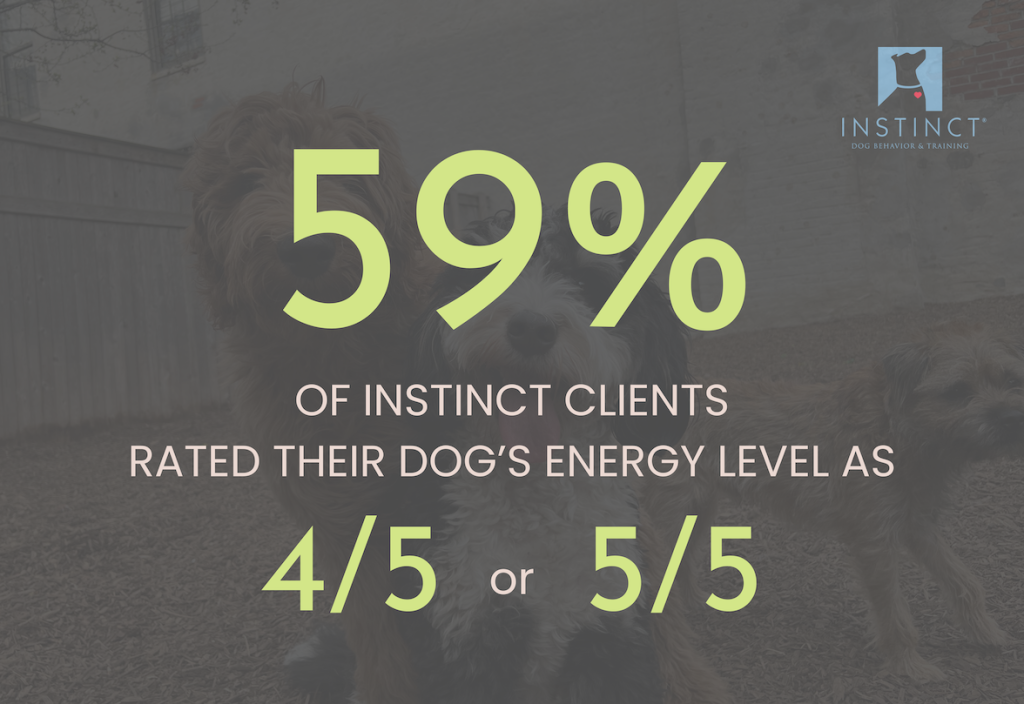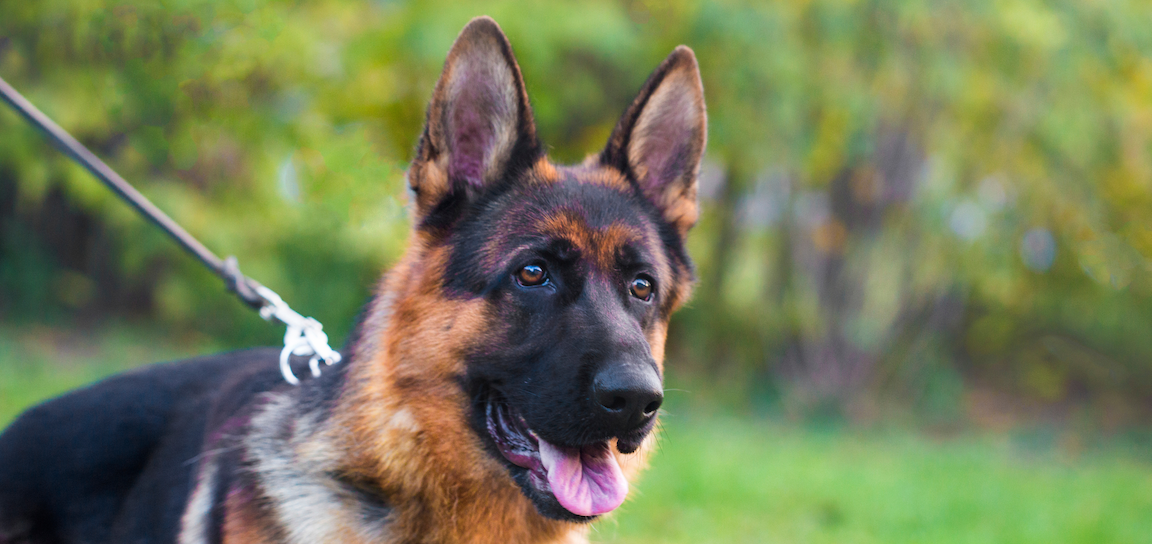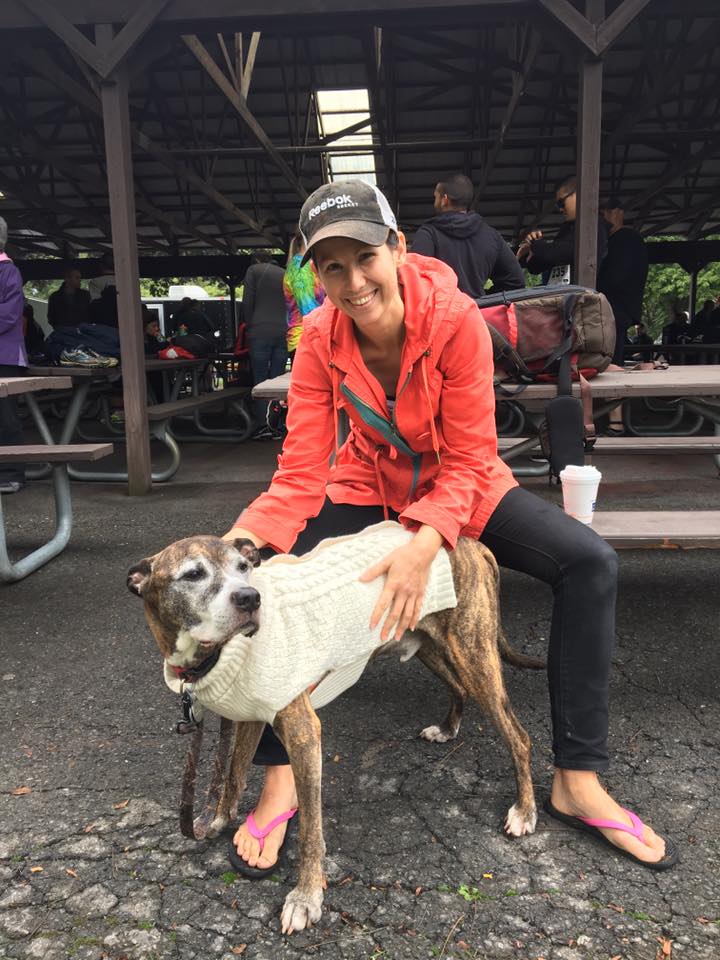
Welcome to the blog!
This week, we’re focusing on how to recognize whether your dog’s go-go-go behavior is really due to higher-than-average energy needs, or if it’s a sign of underlying anxiety or hyper-arousal issues. (and if so, what you can do to help).
Happy Reading,

How to Recognize the Difference Between “High Energy” and Hyper-Arousal in Dogs
(and what to do about it)
If you were asked to rate your dog’s energy level on a scale of 1 to 5, where 1 = couch potato and 5 = energizer bunny, what would you say?
We ask all new Instinct clients this question as part of the behavioral health assessment they complete for their dog prior to their first consultation with us.
Most clients (59%) rate their dog as either 4/5 or 5/5 on the energetic scale. That is to say, the majority of our clients feel their dogs have higher than moderate or average energy levels.


And that ABSOLUTELY may be true and accurate. After all:
- Many of our clients have dogs in the late adolescence/early adulthood stage of life, where energy needs are typically at there highest.
- One could reasonably argue that higher energy dogs might be more likely to need training due to their propensity to find less-than-desirable activities/projects to engage in when their higher-than-average energy needs aren’t met.
But, in our experience, a portion of these dogs aren’t actually what we’d consider to be ‘high energy,’ once we meet and get to know them.
Instead, there are emotional and physiological factors at play in these dogs that are contributing to behaviors most people (very understandably) mistakenly attribute to high energy levels.

Energetic, Anxious, or Hyper-Aroused?
Some dogs are truly high energy individuals who require a greater-than-average amount of physical activity to feel fulfilled.
Many other dogs present as high energy, but on closer inspection, their perpetually restless, “energetic” behavior is indicative of underlying anxiety or hyper-arousal issues.
It’s important to recognize the difference, because the go-to solution for high energy dogs—lots and lots of exercise and physical activity, often of the high intensity variety—may actually be counterproductive for dogs who are anxious or who have hyper-arousal issues.
Assessing Hyper-Arousal
Do any of these statements describe your dog?
- My dog often appears hyperactive – if they are awake, they are almost ALWAYS looking for something to do
- My dog takes treats with a very hard mouth, especially when other things are happening around them
- My dog regularly gets overstimulated and jumps or mouths at me or others
- My dog often shows signs of heightened physiological arousal, including stress panting (corners of mouth pulled far back, rapid breathing), furrowed brows, wide eyes with dilated pupils, pinned back ears, pacing, etc.
- My dog often seems hyper vigilant and/or is easily startled
- My dog has a great deal of difficulty settling/relaxing
- My dog never seems satisfied with exercise – no matter how much they get, they’re raring to go again after a brief rest
If several of the statements above seem to accurately represent your dog’s behavior, they may struggle with frequent hyper-arousal or anxiety. If you have concerns about your dog’s level of hyper-arousal or anxiety, it’s always best to consult with your veterinarian and a trusted behavior consultant.
Exercise Alone Does Not Resolve Anxiety or Hyper-Arousal Issues
Adequate exercise is important to the health and wellbeing of all dogs.
But for dogs who have difficulty “turning off,” exercise is not a stand-alone solution; it may provide false relief in the form of temporary physical exhaustion, but it does not help them feel more comfortable, relaxed, and fulfilled as they move through the world.
Dogs who have difficulty settling due to underlying anxiety or hyper-arousal issues will often benefit from a combination of:
- Setting up your environment and daily routines to minimize exposure to stressors
- Providing slower-paced physical exercise and enrichment activities that encourage the brain and body to sloooow down (sniffing in the grass, foraging, licking, chewing)
- Incorporating training exercises that help to build relaxation skills
- In some cases, exploring veterinarian-prescribed medicines to help the dog’s brain and body better manage stress

At-Home Challenge
If you think (or know) your dog struggles with hyper-arousal and/or anxiety, consider implementing the following adjustments to their exercise routine over the next two weeks*:
- For 2 weeks, swap high-intensity activities like fetch or flirt pole games for low- to moderate-intensity activities like sniffaries, hiking, treat scatters in the yard, etc. You may also opt to increase opportunities for your dog to chew and shred during this time
- At the start of week 3, start to add back in small amounts of the higher intensity activities while keeping in place the low- to moderate-intensity activities
- Take note of how your dog responds throughout the process. Do they seem more or less settled during the day, or is there no difference at all?
- Tell us how things go!
*If you are currently working with a trainer, behavior consultant, or veterinary behaviorist, it’s best to consult with them before making any changes to your dog’s current routine. Always remember, you know your dog best; skip this exercise if it doesn’t feel comfortable for you or your dog.
Keep in mind, this isn’t meant to be a stand-alone ‘fix’ for hyperarousal or anxiety, its just one of many variables to play with, to see what type and amount of physical activity works best for your dog.
NEED TRAINING OR BEHAVIOR SUPPORT?
Check out the resources below!

Check out Instinct’s award-winning podcast, Dogs Unknown (fka DogLab), hosted by Instinct Co-Founders Sarah Fraser (me!) and Brian Burton.

Join one of our free, live training & behavior seminars via Zoom!
Hosted by Instinct behavior consultants, these seminars include a 1 hr presentation plus live Q&A session. Open to all!

Sign up for the Nature-Driven Nurture Foundations course in our Online School. Learn our groundbreaking canine behavioral health framework that teaches you how to optimize your dog’s training & care based on their unique, individual Nature. This self-paced course includes:
- Access to private Alumni Facebook group
- Twice-monthly Zoom Q&As with Instinct co-founders
Or, contact your local Instinct for fully customized training & behavior support with certified, veterinarian-recommended trainers and behavior consultants.



